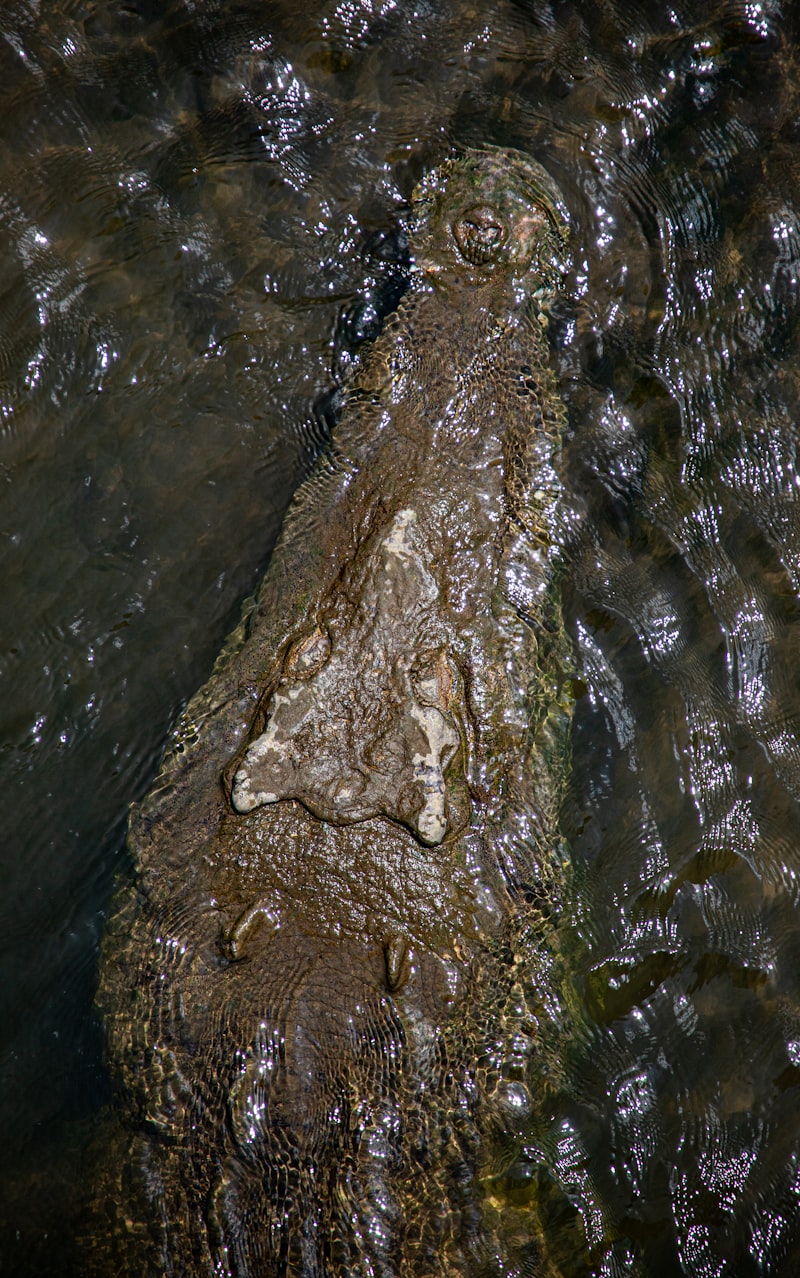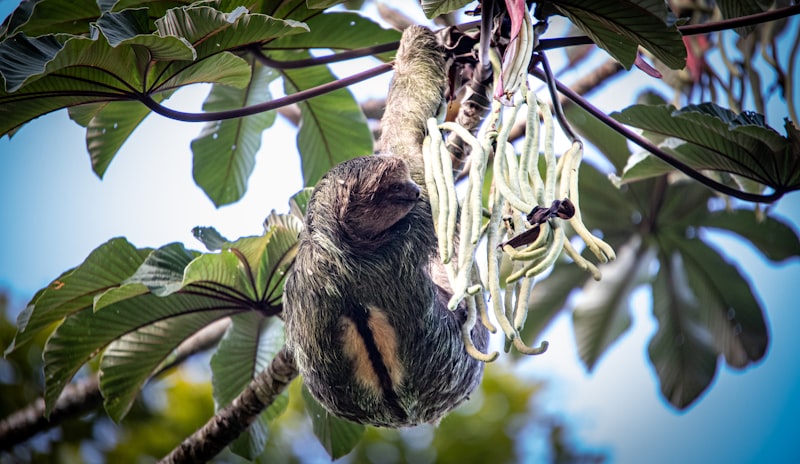Animals have developed remarkable adaptations to thrive in some of the planet’s most extreme environments. From the icy expanses of the Arctic to the scorching deserts of Africa, nature’s ingenuity is on full display through these adaptations.
One of the most fascinating adaptations is found in the Arctic fox. This cunning creature not only survives but thrives in temperatures as low as -50°C (-58°F). Its thick, double-layered fur acts as a natural insulator, keeping it warm even in the harshest winters. During summer, the Arctic fox sheds its thick coat to prevent overheating, showcasing an adaptive molt that aligns perfectly with seasonal changes.
In the deserts of Africa, the camel stands as a symbol of endurance against extreme heat and scarce water sources. Their ability to survive without water for long periods is due to specialized adaptations in their kidneys and metabolism. Camels can drink up to 40 gallons of water in one sitting, storing it efficiently in their bloodstream to prevent dehydration during extended periods without access to water.
Another intriguing example of adaptation is seen in the fennec fox, native to the Sahara Desert. Known for its disproportionately large ears, the fennec fox uses these appendages not only to hear prey movements underground but also to dissipate excess body heat. This adaptation helps the fox regulate its body temperature in the desert’s fluctuating climate, where daytime temperatures can soar to over 40°C (104°F) and drop significantly at night.

In the oceans, the narwhal exhibits a unique adaptation with its spiraled tusk, which is actually an elongated tooth. This tusk is thought to play a role in echolocation and breaking through sea ice to access air holes. It’s a striking example of how animals evolve specialized tools to navigate and survive in their harsh, icy habitats.
Nature’s Marvels: How Arctic Animals Thrive in Subzero Temperatures
Arctic animals are some of nature’s most resilient creatures, perfectly adapted to survive in the harsh conditions of the frozen north. From majestic polar bears to nimble Arctic foxes, each species has evolved unique strategies to not just endure, but thrive in subzero temperatures.
Take the polar bear, for instance. These massive predators are equipped with a thick layer of blubber under their fur, providing insulation against the cold Arctic waters and icy winds. Their large, padded paws help them navigate the slippery sea ice with ease, enabling them to hunt seals, their primary prey, even in extreme conditions.
In contrast, the Arctic fox is much smaller but no less remarkable. Its thick, fluffy fur changes color with the seasons, providing camouflage against the snow-covered landscape and offering insulation against the biting cold. These cunning foxes are known for their intelligence and adaptability, scavenging for food or hunting smaller prey like lemmings and birds to survive the long winters.
Another fascinating example is the Arctic hare, a creature built for speed and endurance in the frigid Arctic tundra. With its snow-white coat and powerful hind legs, the Arctic hare can outrun predators like wolves and Arctic foxes. Its ability to dig burrows in the snow provides shelter from the chilling winds and offers a safe haven during the coldest months.
In this extreme environment, survival often hinges on resourcefulness and resilience. Arctic animals have evolved over millennia to develop specialized adaptations that allow them to exploit every opportunity the harsh landscape offers. From the mighty polar bear to the elusive Arctic hare, each species contributes to the intricate web of life in one of Earth’s most challenging habitats.
From Deserts to Tundra: Unveiling the Secrets of Extreme Animal Adaptations
In the blazing deserts where temperatures soar, animals like the camel have developed remarkable strategies to thrive. Their ability to store fat in their humps rather than all over their bodies helps regulate body temperature, keeping them cool during the day and warm at night. Their nostrils can close to prevent sand from entering, and they can drink large amounts of water rapidly to replenish their reserves.
Contrastingly, in the frigid tundra where temperatures plummet, animals such as the Arctic fox exhibit adaptations geared towards conserving heat. Their thick fur coats provide insulation against the cold, with dense fur covering their paws to act as natural snowshoes. They can change the color of their fur seasonally to blend into their surroundings, aiding in hunting and evading predators.
Penguins, found in the harsh Antarctic environment, have adapted to life on ice and in freezing waters. Their waterproof feathers trap a layer of air, providing insulation and buoyancy while diving for food. Their streamlined bodies and flipper-like wings enable efficient swimming, essential for catching fish and escaping predators like leopard seals.
In the extreme heat of the Sahara Desert, the fennec fox has oversized ears that dissipate heat, keeping them cool during the day. Their pale fur reflects sunlight, offering further protection against overheating. They are nocturnal, hunting at night when temperatures drop, conserving energy during the day in cool underground burrows.
From the sweltering deserts to the frozen tundras, these animals’ adaptations are testaments to nature’s ingenuity. Each species has evolved unique traits that enable them to thrive where few others can survive, demonstrating the remarkable resilience and adaptability of life in Earth’s most extreme environments.
Survival Instincts: The Evolutionary Wonders of Animals in Extreme Environments
Take the emperor penguin, for instance, a resident of Antarctica’s brutal winters. Enduring temperatures that plummet below -40°C, these majestic birds demonstrate remarkable thermal adaptation. Their dense plumage and layers of fat insulate them against the cold, allowing them to incubate eggs in harsh conditions that would challenge even the hardiest explorers.

Contrast this with the camel, known as the “ship of the desert,” surviving in arid landscapes where water is scarce and temperatures swing drastically between day and night. Its ability to store fat in its hump, rather than water, enables it to endure weeks without drinking, navigating the dunes with ease. This adaptive trait has made camels essential companions for nomadic tribes across the Sahara and Arabian deserts for centuries.
In the depths of the ocean, the anglerfish employs a unique survival strategy. Inhabiting the lightless abysses, where food is scarce and predators lurk, the female anglerfish sports a bioluminescent lure atop her head. This adaptation attracts prey within striking distance, ensuring survival in an otherwise unforgiving environment where resources are few and far between.
From the relentless cold of the Arctic to the parched expanses of the Sahara, each species has honed specialized adaptations over millennia. These adaptations, shaped by the relentless pressures of their habitats, underscore the tenacity of life itself. They serve as a testament to the wonders of evolution, where every anatomical feature and behavioral quirk plays a crucial role in the eternal dance of survival.
Adapting Against the Odds: How Animals Master Cold and Heat
Imagine the Arctic fox, a creature that thrives in temperatures as low as -50°C (-58°F). Its fur, a dense coat of insulation, not only keeps it warm but also changes color with the seasons, blending seamlessly into the snowy landscape to evade predators. During summer, it sheds its thick winter coat to regulate body temperature, revealing a sleeker, brown fur suited for warmer climates.
Contrastingly, the desert jerboa, a small rodent found in arid regions, has adapted to endure temperatures exceeding 50°C (122°F). With oversized ears that serve as efficient radiators, it dissipates excess heat accumulated during the day. Its body is designed to conserve water, extracting moisture from its food to survive in environments where water is scarce.
In the depths of the ocean, where sunlight diminishes and pressure intensifies, creatures like the anglerfish have evolved bioluminescent lures to attract prey in the darkness. Their adaptation to extreme pressure allows them to survive in environments where few other organisms can.
These examples highlight nature’s ingenuity in overcoming harsh conditions through adaptation. Whether through physical features like fur and ears, behavioral adjustments such as hibernation or migration, or biochemical processes like antifreeze proteins in extremophiles, animals exemplify resilience and resourcefulness in the face of environmental challenges.
Extreme Makeovers: Incredible Ways Animals Beat Harsh Climates
Then there’s the majestic reindeer, navigating the Arctic’s bitter cold with ease. Its hooves act like snowshoes, supporting its weight on deep snow while also providing traction on ice. Not to mention its antlers—a true testament to evolution’s artistry. They’re not just for show; these impressive racks are natural shovels, helping to clear away snow to access precious lichen beneath, a vital winter food source.
Consider the camel, often hailed as the “ship of the desert.” Its ability to survive in scorching temperatures and go weeks without water is legendary. Their humps aren’t just reservoirs; they store fat that provides energy when food and water are scarce. Moreover, their nostrils can shut tight against blowing sand, protecting their respiratory system during sandstorms that would cripple most creatures.
And let’s not forget the Arctic fox, donning its winter white fur like a savvy fashion statement. This fluffy coat not only camouflages it against snow but also provides superb insulation against the biting cold. During the summer months, it sheds its winter fur for a sleeker brown coat, adapting seamlessly to the changing seasons.
Nature’s ingenuity doesn’t stop there. From the thick blubber of whales that insulates against freezing waters to the streamlined bodies of cheetahs that effortlessly cut through the African savanna’s sweltering heat, animals continue to amaze us with their resilience and adaptability to Earth’s most extreme environments.
In essence, these creatures are living proof of the wonders of evolution—each adaptation a testament to the incredible ways animals have conquered harsh climates across the globe.
Frequently Asked Questions
How do animals survive in scorching desert environments?
Learn how animals adapt to scorching desert conditions through specialized physiological and behavioral strategies, such as storing water, nocturnal activity to avoid daytime heat, and efficient heat dissipation mechanisms.
What are examples of animals that thrive in underwater cold climates?
Discover examples of animals that thrive in underwater cold climates. From resilient species like Arctic seals and Antarctic krill to adaptable creatures such as polar bears and beluga whales, explore how these animals have evolved to flourish in frigid marine environments.
Which animals have unique adaptations for high-altitude habitats?
Discover which animals possess unique adaptations for thriving in high-altitude habitats. Explore how these creatures have evolved specialized features to survive in low-oxygen environments, from powerful lungs to efficient oxygen utilization and thick insulating fur.
What are some remarkable animal adaptations for extreme cold?
Discover fascinating animal adaptations that enable survival in extreme cold climates. Learn about unique features like thick fur coats, insulating layers of blubber, and specialized circulatory systems that prevent frostbite. Explore how animals like polar bears, Arctic foxes, and penguins have evolved to thrive in some of the harshest environments on Earth.
How do animals adapt to seasonal changes in polar regions?
Learn how animals adapt to seasonal changes in polar regions, where extreme cold and shifting daylight affect their survival strategies. Discover unique behaviors such as migration, hibernation, and specialized diets that help them thrive in harsh Arctic and Antarctic environments.



